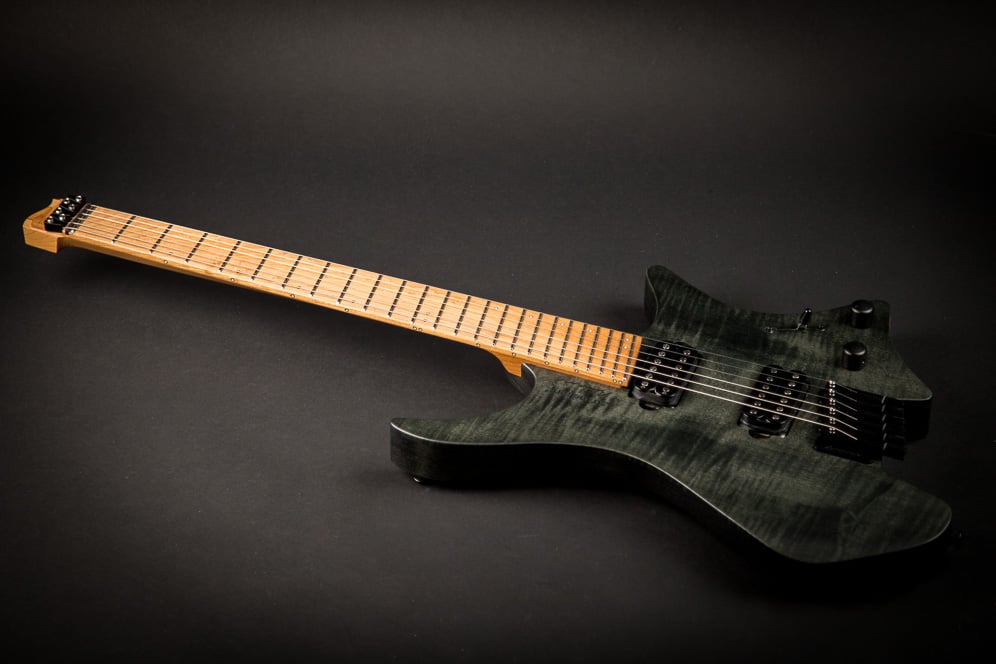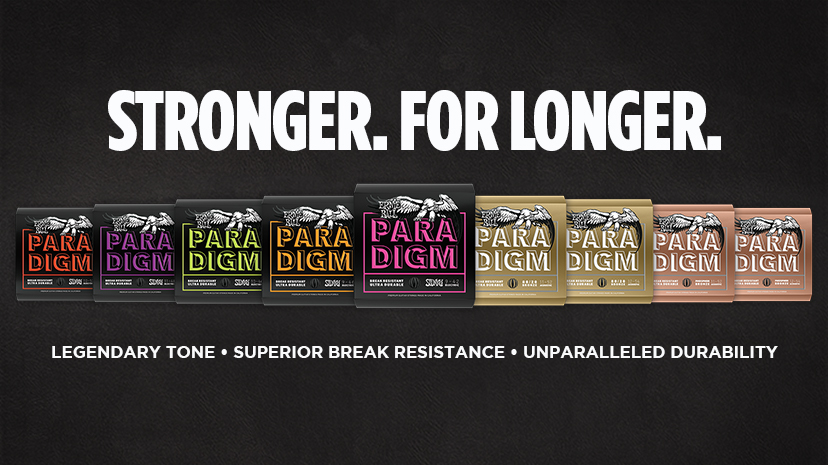Info Updated May, 2024
Studio Tour Added November, 2025
Trevor here to give you the detailed list (and I mean DETAILED) of what kind of gear we all have to be able to do what we do! I’m gonna tell you about EVERY LITTLE PIECE even if you don’t want to know it. You wanna know why?! Because I WANT TO!! (and linking is really good for SEO 😀 😀 ). Anyways, let’s goooooooo!

PS I’ll include a TLDR list form of everything at the end of this post 🙂
Oh, PSS, we are NOT sponsored and we don’t have any affiliate links for any of these products/programs. This is all stuff we love and fully get behind!
Full Studio Tour
We recently moved into a new space (Fall of 2025) and finally, after years of working out of our living room and shared spaces, we have a dedicated music studio! I’ll give ya the full tour in this video, but keep on reading for ALL those details I mentioned before.
Recording
Alright, so I figured I’d start with our overall recording setup, including hardware, DAW (Digital Audio Workstation), and general plugins we use for mixing our music. If you want to know what we use for our guitar/bass sounds I’ll list those later with Wade and I’s gear.
I’ll start with our hardware. We use a Macbook Pro (2021 M1 Pro model to be exact) for all music recording purposes and a Universal Audio Apollo Twin Thunderbolt as our audio interface. This interface is one of the best on the market, providing incredible recording capability and clarity in a compact package, a sturdy build quality, and it’s super easy to use! For our monitors, we use KRK Rokit 5s (in stealth black because all black > yellow/black) which plug directly into the apollo. They sound fantastic and are pretty affordable as far as monitors go. We also use KRK KNS-8402 Headphones as they sound almost identical to the monitors. As for Midi controllers, we use an Akai MPK Mini. It’s compact and provides lots of flexibility. Lastly (and almost most importantly) we store EVERYTHING to do with SonS on a Samsung T5 SSD. We LOVE this thing, it’s so fast we record/mix with the files directly on the drive, saving me space on my HDD.

Next up is software and the most important piece is your preferred DAW and ours is Logic Pro X. In our opinion, it’s the best DAW if you have a Mac computer. It’s a one-time price (as opposed to many other DAWs which require monthly payments) and it includes some great sounding stock plugins, virtual instruments, and royalty-free audio loops you can use in your recordings to spruce them up. When mixing, we use a variety of different plugins from a few sources. These are Slate Digital All Access, Universal Audio Plugins (came with our interface), Black Salt Audio, Fab Filter, Waves, Valhalla DSP, Soundtoys, and many more. A few cool specialized ones that we use are Oeksound’s Soothe 2 and Soundtheory’s Gulfoss. Slate digital is something we definitely recommend. It’s an affordable monthly cost to have access to their entire plugin library, all of which are top of the line that many of the top mixers in the world use. I’m usually not a fan of monthly subscriptions but this is seriously one of the best things we’ve signed up for. Many plugins on their own can cost $100 or more (wayyyyy more, like, you’ll go homeless more) so paying a low fee of $10 a month (for the first 6 months then it’s $15 forever) is SO awesome! You could even stop the subscription for a bit if you’re not currently mixing.
One of our two big plugin/virtual instruments we’ve invested in is Get Good Drums (GGD). GGD is an AWESOME sounding virtual drum set we are using for all of the songs on our upcoming album. We had used the Logic Drummer feature originally but are way happier with sounds/effects/beats of GGD. We specifically use both the Matt Halpern P4 (BLOOM and Inviting Warfare)and P5 (Anhedonia) drum kits as well as Smash and Grab. This company/product was created by the guys in Periphery and they know how to get some KILLER sounds. Plus the name is sooo good because of Adam “Nolly” Getgood.

The other virtual instrument we’ve invested into is Audio Imperia’s Nucleus. This plugin has some of the best sounding orchestral samples out there for writing with since many of our songs feature string sections and whatnot. They sound SOOOO good and cover pretty much anything we could possibly need for our songs.
Lastly, are some of the courses we’ve taken to help us learn what the heck we are doing with home recording/mixing. The first one is from Recording Revolution and it’s called Mixing University. This program is great because it teaches you the very basics of setting up your studio, mixing techniques like top-down mixing, EQ and compression, and gives full mix walkthroughs to help you mix your own song. We cannot recommend this enough if you’re just starting out. The next set of courses are also included in the Slate Digital All Access Pass (again making the monthly cost a NO BRAINER) and it’s called Slate Academy. Here they have more in-depth courses on their plugins, ear training, eq, compression, synths, and mixing walkthroughs from some of the best in business from all genres of music. Finally, the GGD YouTube channel is actually really helpful with drum mixing tutorials as well as full mixing walkthroughs on some Periphery songs. This is actually where I’ve learned the most from I think.

One thing someone online told me once that changed my mixes forever was to train my ears. That that was more important than any amount of tricks you could learn and I would have to agree. I think every starting mixer should train their ears to hear EQ and differences in compressions, distortions and all the rest. It changed my mixes forever. A large part of the jump in quality from our original tracks to BLOOM and beyond was because of this. To train my ears, I used the website Sound Gym which I highly recommend to anyone interested. It gives you a few exercises per day and it takes a few minutes. I did it for around a year and sign up here and there if I’ve had long breaks from mixing. Absolutely worth it.
Phewww, that was a lot. Now for the fun stuff, the actual music gear. WOOHOOO!
Bethany
Alright, so Beth’s main piece of gear is…. Her pipes. Duh. Did I have to say that? So her list is gonna be pretty short. For recording our first 2 albums, she used an Aston Origin mic. This mic looks SO COOL and it sounds EVEN BETTER. She saw it in the store and knew that it was the one. Not to mention it’s very affordable (about 80% cheaper than most pro mics) for the quality it provides, many top singers/studios have switched to this mic which just backs up how great it is.

Now, she has fallen in love with the brand sE Electronics, so we’ve been recording all our new songs with the Gemini II which is an analog tube mic. SICK! It sounds so thick and full, I don’t think she’ll go back to full digital now. When we practice together she sings with an sE V7 BFG or the V7 MC1 BLACK wireless capsule with Shure wireless base, when she has the option to be wireless. ALTHOUGH, I REALLY want her to get one of those really cool bullet mics. Maybe one day.



For vocal training, she’s been taking lessons with Phoenix Vocal Coaching, provided by Orsi Ronai AKA “Rocky”. She has been such a help for Beth, especially improving her vocal grit/distortion but she is just overall a fantastic teacher, and Beth is always so stoked after every lesson. If you’re looking for vocal lessons, check her out immediately!
Next up is ME 😀
Trevor
Guitars
I can’t talk about gear without talking about my guitars. They are my pride and joy (don’t tell Beth) and I am so grateful/thankful that I have such high-quality instruments.
First up is my Aristides H/06R. I received this guitar after finishing Inviting Warfare but it has been my main guitar ever since I got it and have used it on all recordings since. It’s made with a material that Aristides created themselves called “Arium” and it recreates the best sonic characteristics of tonewood. It sounds SOOO good. It’s ordered custom in a lilac finish with Bare Knuckle Ragnarok Pickups, an arcade style kill switch, luminlay side dots, and even a trem block so I can have a whammy bar while also having the ability to tune it up and down as I please. I wanted a guitar that required no batteries at all so I don’t have to worry about losing signal during a performance and I was worried about losing a bit of versatility. I gotta say, with the Ragnaroks, this thing is so versatile with just the two humbuckers. When split, they give an amazing single coil tone as well. I absolutely love this guitar and you should watch my review of it online 😉
My second main guitar is my Kiesel Zeus guitar. This thing was custom made to my spec back during the time of recording Inviting Warfare. It features an AMAZING antique purple ash finish with Dimarzio Crunchlab and Liquifire pickups, and luminlay fret inlays. It also features a passive/active system in which I can get two different voices out of either of the pickups and also split them into humbucker or single coils. It makes this guitar INCREDIBLY versatile and it can do pretty much whatever I need it to do. It’s just so puuuurdy 🙂 You can also watch a review of this guitar online!
My final guitar is a Strandberg Boden OS6 (complete with Nuno Bettencourt’s signature). This thing is so ergonomic and comfortable to play. It also features some fanned frets for proper intonation on each string, Strandberg’s patented Endur-neck (which is really crazy, go take a look), and has Fishman Fluence pickups. These things are really cool because they have two voicings so I can get two different sounds out of each pickup, a modern tone, and a vintage tone. It’s also chambered to make it light.

Amps/Effects
Let’s start with the plugins/virtual amp models I use in the recordings of our songs. These are all done with Neural DSP plugins. These guys are AWESOME and the plugins they make are even more awesome! (I should really learn some new words, how about astonishing, awe-inspiring, or breathtaking?). I mainly use the Archetype Plini and the Archetype Petrucci. Both of them provide a few different amps, compression, drive pedals, other effects like modulations and octavers, different mic options, EQ bands, delays, and reverbs. All the things you need to create the foundation of a killer tone and both are INCREDIBLY versatile. They even have doublers for stereo practicing, pitch shifting for quickly trying drop tunings, and a metronome for practice. I also have used Archetype Nolly, Archetype Abasi, and their Soldano plugins on different songs. For some more FX, I also use the Line 6 Helix Native plugin. Not much to say here as everyone knows Line 6 is one of the industry leaders as far as FX goes. I do find I like the tones out of the Neural stuff instead of the amps in the Helix so I just use it for guitar-related FX.
For my speaker cabs, I have used a lot of the built in Neural cab sounds BUT I also use a few different IRs that I really like. My fav are from Tone Mission based on John Petrucci’s sounds on some recent albums and one from Ola Englund. I blend and mix and match but I generally stick to the Liquid Tension pack for my core sound now cause it’s just ohhh so crunchy yet creamy.


For playing live my current setup is a Neural DSP Quad Cortex, JP95 Dunlop Wah pedal, Mission Engineering Chris Broderick Expression Pedal, Walrus Audio AETOS Power Supply, and Shure GLX-D+ Guitar Wireless system. The Quad Cortex was only natural for me to use as I already use many of their plugins and am very familiar with them, and it’s also gorgeous in both physical design and UI design. I started with digital modelers back in the day and switched to Tube amps for years but honestly, digital has gotten so close and it’s much more versatile (and lighter) than a big ole’ tube head. With the QC I have a ridiculous number of guitar amp heads and cabs to choose from as well as every effect I could ever need, all with the highest possible modeling quality. On top of this, I can “capture” the sounds of any amp I want or download other people’s captures of their gear so I can try it out myself. Technology is MIND BLOWING! The JP95 wah pedal is the best sounding wah pedal I’ve ever used so I use it instead of the modeled wah in the QC (although they will be releasing a digital model of the JP wah into the QC soon) and then the Mission is just your standard expression pedal that has an on-off toe switch so it’s two expressions in one.

Accessories
I’ll keep this area pretty short. For strings I use Ernie Ball Slinkys (10-46). Regulars on my Strandberg and Paradigms on my Aristides/Kiesel since they are UNBREAKABLE which pairs really nicely with a whammy bar. For picks, I use the Dunlop Trinity Picks (I really just think that JP makes some of the best gear out there) because they are small, thicker, triangle picks that I can just rotate when one side is used too much. I’ve always liked smaller picks because I feel they can’t dig into the strings as much which makes them more efficient for faster picking and other things like pinch harmonics. A crazy fun accessory I have is an Ebow which basically infinitely sustains any note I play with it, making crazy sounds you didn’t even know where possible. Lastly, I gotta recommend the “Tempo” metronome app. It’s so easy to use and makes practicing with a metronome a lot easier/less tedious.

Wade
Basses
First up is his Dingwall NG2. Wade waited for this bass for 1 year, 1 month, and 26 days. Holy crap. It actually arrived a few days after Beth and I went to Japan for two weeks so, after all that waiting, he still had to wait to come over and jam with us haha. If you asked him if it was worth the wait, I’m pretty sure he would say it’s the best thing he’s ever bought. Not only does it look slick in purple, but it’s also multiscale for proper intonation, features top of the line hardware, and pickups which give him a bunch of different bass tones. If you’re a bass player, this thing is unbeatable.

Next is his Dingwall D-Roc Standard. This thing is just a beauty! Look at the colour shift on it. Wade got this after Inviting Warfare and has been using it pretty steadily since then. Like his other Dingwall, it’s also a multiscale, has some of the best hardware out there, and FD-3n Passive Pickups. That shape is just an iconic shape for many basses and it’s awesome to finally have one join our family!

Amps/FX
For recording Wade’s bass we use two different plugins. The Neural DSP (these guys again?!?!) Parallax for overall bass tone (sometimes we will use some of their other guitar plugins for bass tone as well) and then the Line 6 Helix Native for all FX like I do. The Parallax is AMAZING for creating any kind of bass tone you can imagine. It lets you parallel process a single bass tone, compressing the lows while adding distortion to the mids/highs separately and then meshing them all together on one channel strip. This is the standard way to process bass in recordings but usually you need to create 2 separate channels to do so. This lets you do it all in one plugin. The Helix Native is, again, fantastic for FX and bass tone and it’s great for Wade because of his main piece of live gear.

Like me, Wade also uses the Neural DSP Quad Cortex. Wade dials in all of his live tones with this baby and it’s bass amps/effects (including his favourite Darkglass Bass distortion pedal). Darkglass is Neural DSP’s sister company so they have the best representation of their gear on board. Soon they will add Parallax to the QC as well which will make it even more versatile.
Lastly for practice he plugs into his Focusrite Scarlett Solo interface and uses Ableton Live to load in any plugins he needs to.
Accessories
It doesn’t get much quicker than this. Wade uses D’Addario NYXL Bass Strings (.045-.130) which sound great and stay in tune much better than the average bass string 😉 While he mostly uses his fingers to play, when he uses a pick, he will use Dunlop Tortex .6mm picks.
ANYWAYS, that’s it! That’s ALL the gear we (currently) have haha. I tried to get every little detail/reason why we use it that I could and I hope that this has been enlightening (and not too boring) for many of you. I hope it also may help any of you trying to decide what kind of gear you should purchase for your studio/next musical instrument.
Let us know your next big purchase bellow 🙂
Here is the TLDR list
Home Studio
- Gear
- Plugins
- Lessons
Beth
Trev
- Instruments/Accessories
- Guitars
- Aristides H/06R
- Kiesel Zeus
- Strandberg OS6
- Fishman Fluences
- Amps/Processors/FX
- Accessories
- Guitars
Wade
- Instruments/Accessories
